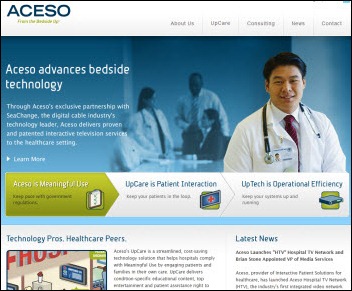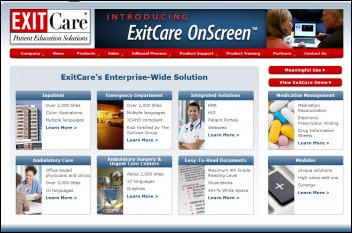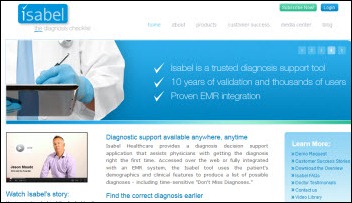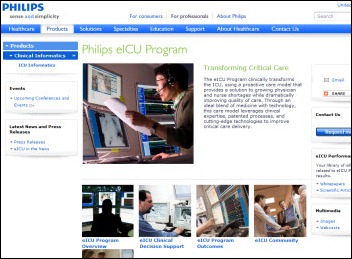With McGraw’s new position at Transcarent, it seems like Glen Tullman might be getting the Allscripts band back together.
HIStalk Advisory Panel: Wrap-Up 7/25/12
The HIStalk Advisory Panel is a group of hospital CIOs, hospital CMIOs, practicing physicians, and a few vendor executives who have volunteered to provide their thoughts on topical industry issues. I’ll seek their input every month or so on an important news developments and also ask the non-vendor members about their recent experience with vendors. E-mail me to suggest an issue for their consideration.
If you work for a provider organization (hospital, practice, etc.), you are welcome to join the panel. I am grateful to the HIStalk Advisory Panel members for their help in making HIStalk better.
Budget Expectations for the Next Fiscal Year – Which Initiatives Will Get Funding?
- I think HIE-like or lite type of activities will begin to take place requiring new funding in this area. The scope of engagements / integration will be limited to only strategic business and patient care partners in order to fully understand the care benefits, risks, value to our organization in investing and sharing more patient care data than what we already do. MU stage 2 efforts will require additional funding.
- Big data (clinical and business analytics), IT security, support for ICD-10 and MU Stage 2, EHR optimization and rollout to affiliates.
- Disaster recovery / business continuity will get significant funding. High availability is part of that, so it will be infrastructure spend.
- Decreased: anything discretionary. Increased (or at least not cut): anything required to meet MU (1 or 2).
- Data security and protection will require significant funding, as will software upgrades for MU2 and ICD-10. Capital will go to increased virtualization, significant expansion of wireless capability for clinical equipment, and a shift from COWs to fixed (multi-purpose?) workstations in patient rooms.
- We will probably be spending more than average on contracted help next year. We in the midst of replacing core systems and need help. The next capital wave for us will be another year down the road when we have to buy some niche system to address an issue in the core system that isn’t working as we thought / sales demonstrated.
- Because of the large number of new software applications we installed this year, we will see a significant increase in maintenance contracts in our operational budget. Capital budget requests for next year include a new OR system, additional pieces for MU Stage 2, and disaster recovery.
- Disaster recovery and data warehousing seem to be increasing for us.
- Optimization, quality-improvement related IT projects that enhance our EMR investment. With Meaningful Use, we’ve just laid the foundation. Much opportunity to optimize the EMR around specific quality goals. Beginning to look beyond the EMR towards revenue cycle solutions. How can we better integrate inpatient, outpatient revenue cycle (along with home care) within an IDN and see value from clinical-revenue cycle alignment?
- We will be embarking in two main areas. We will be piloting an ACO, so that means a significant investment in data exchange, storage, and portal access. We will also be investing in a enterprise data warehouse.
- Small niche projects. After paying for Epic, that’s all the money we got.
- We’ll be spending money on VDI and a Windows 7 upgrade in the latter half of 12 and into 13. We’ll be deploying a lot more PCs (almost all VDI) in patient rooms and adjoining clinical areas. And virtualizing everything in the data center that we can. Other than that, it’s all Epic, all the time.
- BI/analytics: increased. HIE: increased. ICD 10: more. All else: less.
- As far as our application projects, our budget requests and approvals will be driven by MU, namely patient portals and quality reporting solutions. We’ve attained Stage 1 and need to stay on course. I’d like to say ICD-10 was going to be a priority this coming year, but the delays have caused folks to take their eye off the ball on this one for now. Our technology requests will be weighted toward technology refreshes that have been neglected over the last few years to free up dollars for our EHR and MU initiatives.
- Infrastructure will be a slight uptick due to our acquiring practices and hospitals. So may staffing. Coming off of an Epic install, the CFO does not want to entertain too much in IT capital. BI may also get funded.
- We are focusing on outpatient MU. Next year will probably be a retrenchment year, focusing on optimization and backlogged maintenance.
- Increasing funding: analytics, implementation of decision support. Capital budget requests: platform to integrate physician mobile devices to EMR, integration of hospital medical devices to EMR.
- Continued emphasis on funding data sharing around ACOs, medical homes, continued rollout of advanced clinical systems, and keeping up with Meaningful Use. More emphasis on eliminating redundant functionality and standardizing applications.
- We have a big increase of completion of CPOM (we use "M" for "management" instead of "E" for "entry", as anyone can enter orders, but only docs/APs can manage them) and our custom physician documentation and inpatient problem list tools which docs are really liking. Other increases: HIE linkages to additional in-house system and to other HIEs, big data systems in support of accountable care. FY14: barcoding, optimization. Decreased: legacy systems,ICD-10 (because I predict that either CMS is going to make it optional – a real mess if this happens – or Congress will legislate against it).
- I don’t think we will see a decrease in IT spending, but a decrease in overall spending to try and cut costs. For example, less money for clinical support staff (e.g. RNs, medical assistants), especially as HIT starts to automate their jobs. More funding for quality, decision support, analytics, BI. Hopefully balanced by more revenue from gain sharing and other value-based reimbursement supported by and proven by HIT. If not next year, coming soon.
Good Experiences with Vendors
- Iatric is one of the vendors that provide “clothes” for our “pig” (Meditech Magic). They have been a wonderful vendor, though at the moment they are a little stretched and having difficulty delivering on a couple of their applications. They have a proven track record and I believe that they will deliver as promised.
- eClinicalWorks has a good product and their support has improved, but the communication barriers are still serious.
- We recently has an engagement with Encore. They came in here and did a Meaningful Use assessment, focused on the quality components. They were thorough, very professional, and left us with a very clear list of items to address with a full understanding of what we need to do to address them. It was a great engagement and they are a very strong organization.
- Working with Iatric Systems and Intuitive Technical Solutions on interface development. Both firms doing well.
- I want to suggest that other vendors take Voalte’s lead and put a “contact us” button directly in their application. The Voalte people did that as part of product development with our team. They also responded by text message back to the users about their individual suggestions as they came in. As a vendor, you may not be able to handle the volume of suggestions that come in from every individual user point, but I know our IT department would appreciate a way to get direct feedback from users from a “we care” button in the application.
- If I did not mention Zanett, I should have. We use them for PeopleSoft help and they are quite good – knowledge, price, and flexibility.
- Allscripts. Trying hard to provide a better medication / orders reconciliation system. They showed an understanding that it really does need significant improvement.
Bad Experiences with Vendors
- Meditech still doesn’t get it. Their recent Physician Forum offered physician representatives “choices” such as “which is better, A or B”, where the real best choice was “C”, neither of the above. Specifics to that were, “Our existing lab display is hard coded to have oldest displayed on left, newest result on right; in a new report for one thing (only), we are considering letting the user chose to have it oldest on the right, newest on left next to the label. Which is better?” Correct choice (not offered), is to let user pick left>right or right>left chronology, not hard code it. Usability (and safety) can be addressed with icography, user-centered design, etc. Many other examples exist.
- Siemens. New physician documentation application is another (separate) application, won’t pull data from (existing) nursing documentation into templates, users cannot create/edit templates for another year, requires separate user IDs that must be synchronized with the three other separate Siemens apps (pharmacy, Soarian, med rec).
Small or Little-Known Vendors
“We contracted with Aceso Patient Interactive solution as part of our Patient Engagement initiative. It’s inpatient-focused initially and uses the HDTV in the room. We have linked it to the Epic EHR so the system knows all the problems with a particular patient and can push the appropriate patent education to the bedside. For example, if the patient had a hip replacement but also has diabetes, Aceso system knows to push education on both conditions. Patients can also manage their own pain assessments through the system. The plan is to extend to the home system through our patient portal. This also satisfies a stage 2 MU requirement.”
ExitCare
Isabel
“Isabel is a small/little-known vendor with a nice product and professional support.”
Philips eICU
“The Visicu e-ICU division of Philips is still relatively small and still relatively unknown. Philips is clearly not small and unknown, but the e-ICU group is — Visicu out of Baltimore. Very cool product, great ROI, great success stories with customers, big positive impact on patient care and quality of care.”
Tableau
“I use Tableau (data visualization software) and love how easy it is to work with and management likes how it presents complicated information in an easy fashion.”







Cerner was down and of course it caused some difficult moments. However, we have been remote hosted with Cerner for 7 years and this is the first time we have experienced an issue this long in duration. I will say that we had immediate communications from Cerner and during the downtime we had 15 minute e mail updates from Cerner as well as phone calls from our production owner. We have a robust downtime and internal notification procedure and despite the length of the downtime we had minimal disruption to our operation. We have received a complete report from Cerner on the outage and have shared it with our leadership.